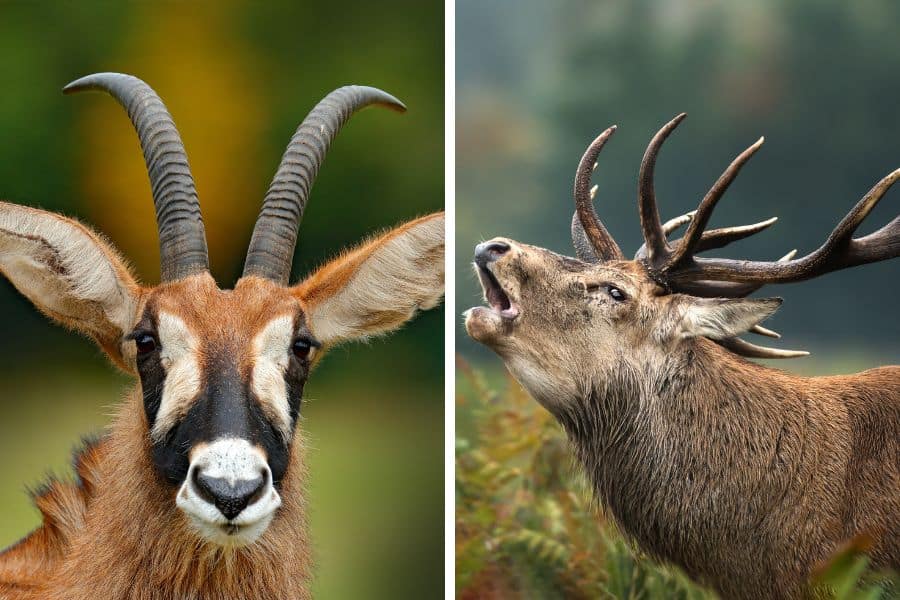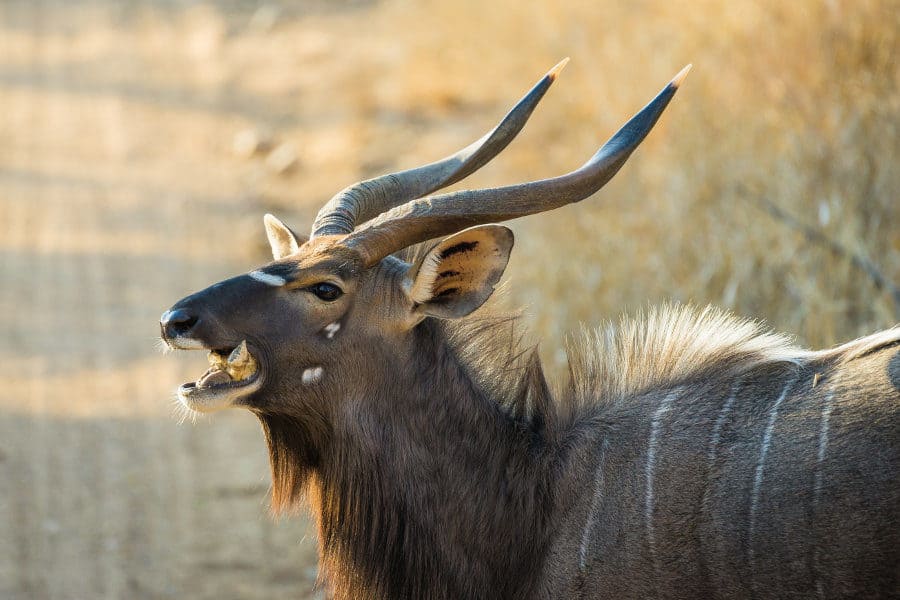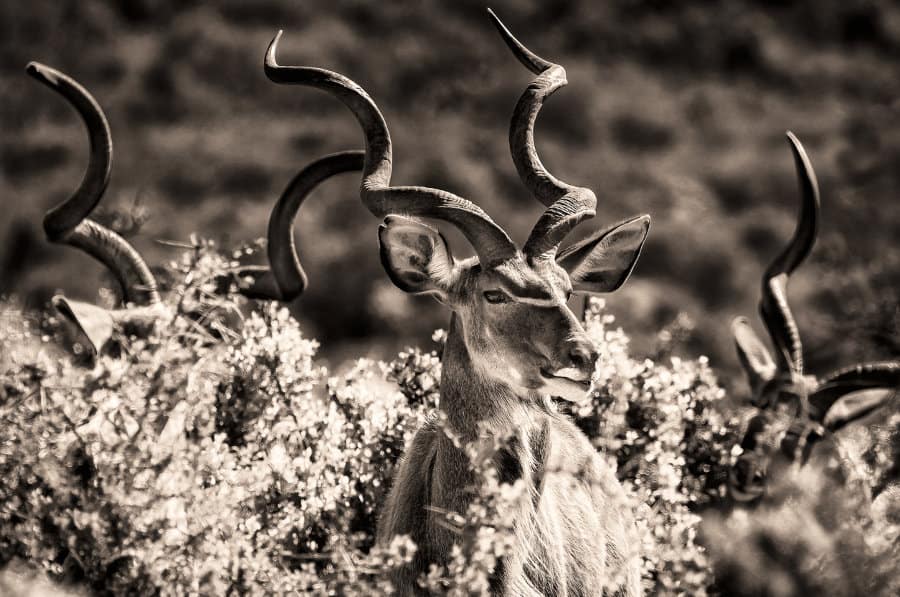The antelope vs deer dilemma is a tricky one. What’s the difference between these two superficially similar sets of animals?
On first glance, you might think antelope and deer are closely related. They’re both hoofed herbivores in the order Artiodactyla – the even-toed ungulates.
Yet deer and antelope are in different families. Deer form the family Cervidae, while antelope belong to Bovidae.
Antelope are abundant in Africa – the continent is packed with more elegant antelope species than any other. Deer, on the other hand, are absent from most of Africa, with just one native species. (More on that later.)
Apart from location, there are many other differences between antelope and deer, from appearance to speed, size, and more. Read on to find out all about these two amazing groups of animals.
Antelope vs Deer Species
Antelope and deer are both diverse families with many different species. Here are some quick-fire facts about both groups of animals.
Antelope facts
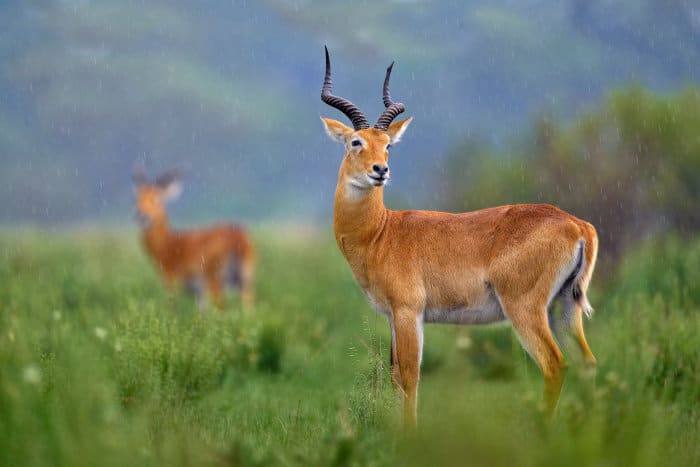
- There are 91 antelope species worldwide. More species live in Africa than any other continent.
- Antelope are bovids, a family that also includes wild and domestic cattle, sheep, and goats.
- Antelope also live in Asia and Eurasia. The pronghorn, sometimes called the ‘American antelope’, is not a true member of the family.
- Gazelles are a type of antelope, comprising 19 species.
- Other common African antelope include impala, springbok, and the adorable dik-dik.
Deer facts
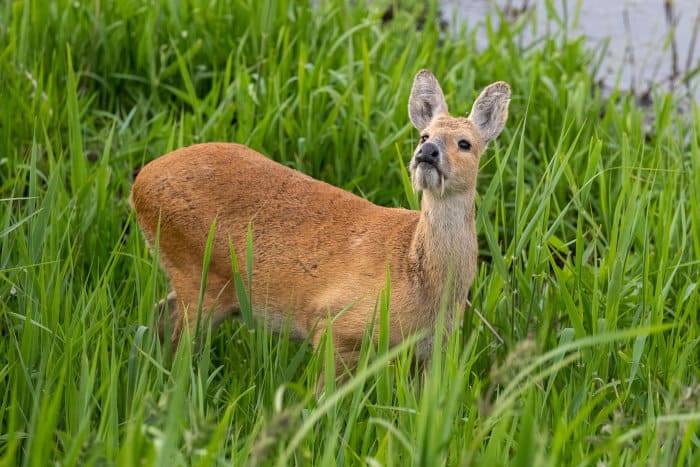
- There are 55 deer species around the world, forming the family Cervidae (AKA cervids).
- Deer are indigenous to every continent except Antarctica and Australia, though Australia has some introduced species.
- Some species, such as the musk deer and mouse deer, may be called deer but aren’t closely related to the ‘true deer’.
- Male deer grow antlers, apart from the Chinese water deer, which grows tusks (see image above)!
African Antelope
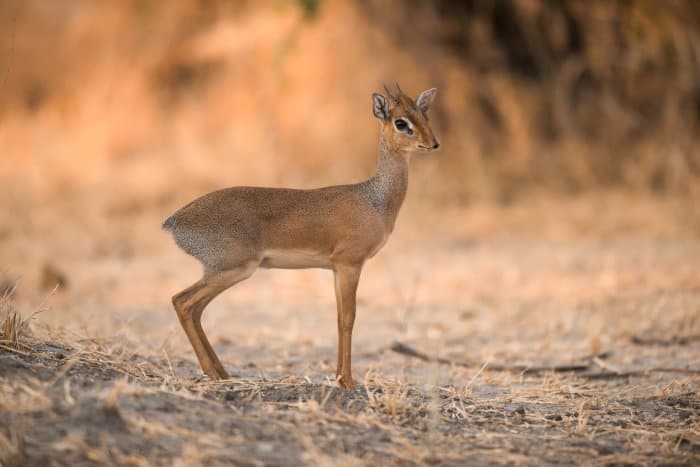
African antelope come in all shapes and sizes, from the enormous common eland to the diminutive dik-dik. Graceful gazelles glide over the grassland, while massive herds of wildebeest make their annual migration.
The impala is the most common antelope species, grazing in large herds during the rainy season. If you’re out on safari it’s one of the species you’re most likely to see.
Others, like the elusive bongo, are shy forest-dwellers, and much harder to spot.
Antelope live all over the continent and have adapted to a wide range of habitats, from grasslands and lightly-wooded savannas to swamps, rainforests, and deserts.
You can find them in North Africa, right down to the southern tip of the continent. From the west coast, through the central rainforests and on the great grasslands to the east.
Learning the differences between antelope and deer is one thing – telling all these antelope species apart can be an even bigger challenge!
African Deer: The Barbary Stag
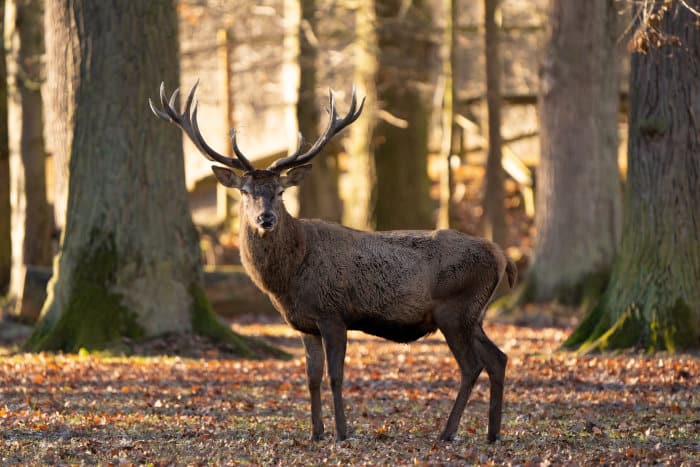
African deer, on the other hand, are nowhere near as diverse.
In fact, Africa only has one native deer species: the Atlas deer, or Barbary stag.
The Barbary stag is currently classified as a subspecies of the red deer, which lives throughout much of Europe and parts of Western and Central Asia.
Some studies, however, argue that the Barbary stag should be a separate species.
The Atlas deer gets its name from its habitat – the Atlas Mountains in North Africa. It lives in dense forest in parts of Morocco, Algeria, and Tunisia.
Finding this elusive African deer species is much harder than seeing antelope. Hunting dramatically reduced their numbers, though the population is starting to recover.
The best place to see the Barbary stag is probably Tazekka National Park in Morocco. Humans once hunted this majestic species to extinction here, but the Atlas deer has been successfully reintroduced to its old mountain habitat.
Physical Differences Between Antelope and Deer
To the untrained eye, deer and antelope may not look too different from each other. There are some telltale signs, though.
Horns vs antlers
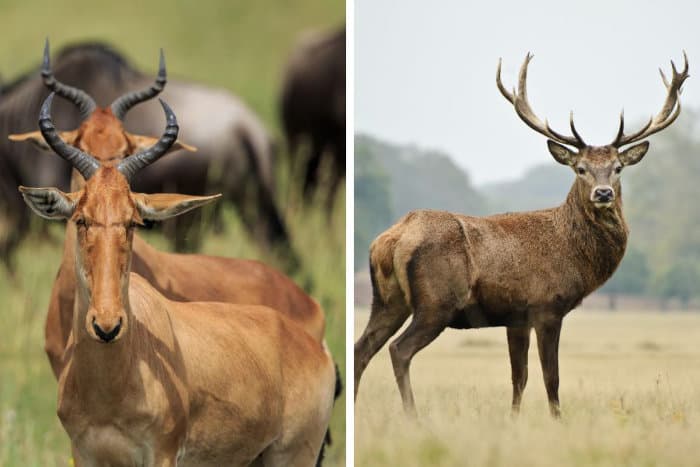
One of the main physical differences between antelope and deer is what’s on their head. Deer have antlers, while antelope have horns.
What’s the difference? Mainly the fact that deer shed their antlers and regrow them every year, whereas an antelope’s horns continue to grow throughout its life.
Antlers are made of bone and are a single structure that grows as an extension of the deer’s skull.
Horns, on the other hand, are a two-part structure. The inner part is true bone, like a deer’s antlers, but this is covered by a keratin sheath – the same substance as human fingernails.
In most deer species, only the males grow antlers. Some female antelope have horns, but they’re generally smaller than the males’.
There’s one more notable difference that should be easier to spot: antlers are branched while horns aren’t.
Antelope vs Deer Size Comparison
It’s hard to directly compare antelope vs deer size, as there are so many different members of each family.
There’s a lot of size overlap, though antelope boast both the biggest and smallest species.
Largest and smallest deer species
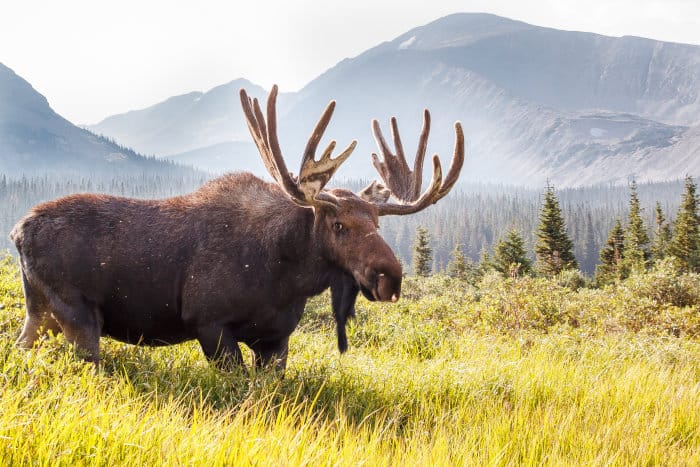
The world’s largest deer species is the moose. This mighty mammal measures up to 2.1 m tall at the shoulder and 3.1 m in length, while males can weigh up to 700 kg.
The world’s smallest deer is the northern pudu. This South American species stands up to 35 cm tall at the shoulder and weighs 3.3-6 kg. The miniature mountain-dweller lives at high altitudes in the Andes.
Largest and smallest antelope species

The largest antelope species is the aptly named giant eland. This huge, spiral-horned species has a body length up to 2.9 m and stands up to 1.8 m tall at the shoulder.
Despite being shorter than the largest deer species, the moose, the giant eland is bigger in terms of mass. Males of this stockily built species can weigh up to 1200 kg.
As for the smallest antelope species? Many people believe it’s the dik-dik, but the honour goes to the royal antelope. This tiny creature measures just 25 cm at the shoulder and weighs under 3 kg.
Antelope vs Deer Speed
When it comes to antelope vs deer speed, there’s only one winner. Deer may be among the fastest land animals but, with one or two exceptions, they’re slower than most African antelope.
Here are some of the fastest antelope and deer species, ranked.
Fastest antelope
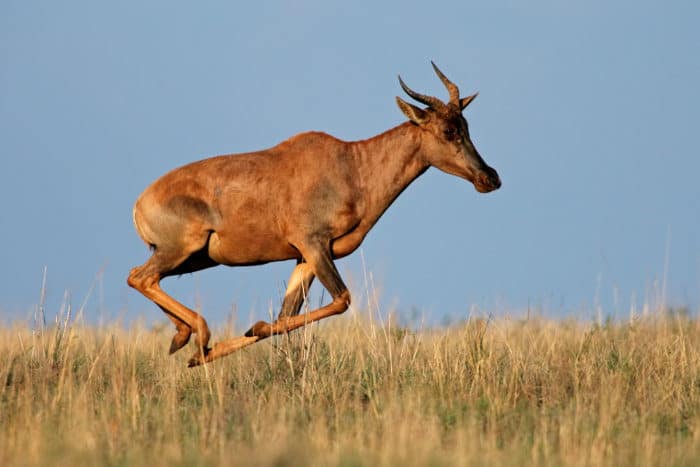
Several species vie for the title of ‘fastest antelope’.
The African savanna is a scary place when you have speedsters like the cheetah hunting you – that’s why these antelope need speed, agility, and endurance to evade apex predators.
1. Tsessebe
This social antelope species clocks in at speeds of over 56 mph (90 km/h). That’s faster than the lion, and only narrowly slower than the cheetah.
2. Springbok
The ‘pronking’ springbok is one of the most popular antelope. Known (and named) for its distinctive leaping gait, the springbok can hop along at almost 55 mph (88 km/h).
3. Blue wildebeest
What are you ‘gnu’ do when predators come for you? If you’re the blue wildebeest, you’re going to gallop away at 50 mph (80 km/h).
There are plenty more sprightly species that barely missed out. Check out a full list of the fastest African antelope here.
Fastest deer
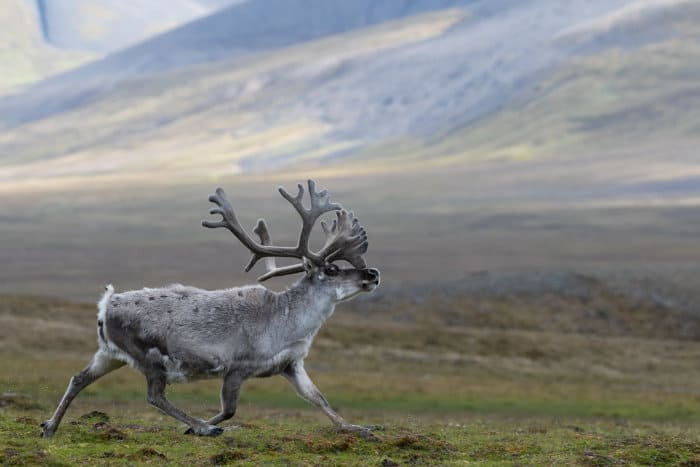
1. Reindeer
Santa chose wisely with these speedy sleigh-pullers. The reindeer, or caribou, is the fastest deer species with a top speed of around 50 mph (80 km/h).
2. Elk
The North American elk, or wapiti, narrowly misses out on the top spot. Elk have a top speed of about 45 mph (72 km/h) – handy when their habitat includes predators like wolves and grizzly bears.
3. Mule deer
Mule deer have a similar top speed to elk, of 45 mph.
Antelope vs Deer Comparison
Despite the differences between deer and antelope, it’s not surprising people get them mixed up as they share several things in common. Here’s a quick-fire deer vs antelope comparison:
- Hooves: both antelope and deer have split hooves with two weight-bearing toes on each foot. Some other African herbivores, like zebras, walk on a single large hoof.
- Diet: deer and antelope are both herbivorous ruminants with a four-chambered stomach. Food is stored in the first chamber, the rumen, before being regurgitated and chewed again. This adaptation helps both families of animals digest tough plant material.
- Behaviour: whether it’s lions or tigers, wild dogs or wolves, both antelope and deer have to be wary of predators. They’re always alert and on the lookout for danger – ready to run at a moment’s notice.
Keep an Eye Out for Antelope on Safari
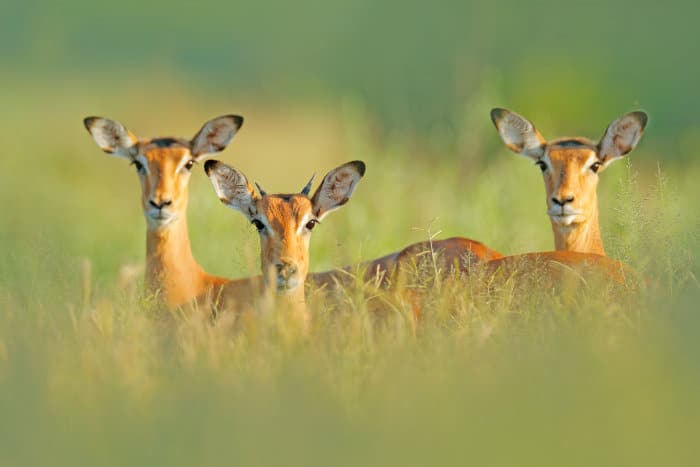
Bovids and cervids certainly have their similarities.
Yet now you’ve learned some of the main differences between antelope and deer, so you should have no trouble telling the two apart.
If you’re out on an African safari and you’re still wondering whether the animal in front of you is an antelope vs a deer… it’s an antelope. (Unless you’re in the Atlas Mountains, on the trail of the elusive Barbary stag.)
What kind of antelope, though? With so many species calling Africa home, you’d better read up on some of the amazing antelope you might spot in this diverse family.
